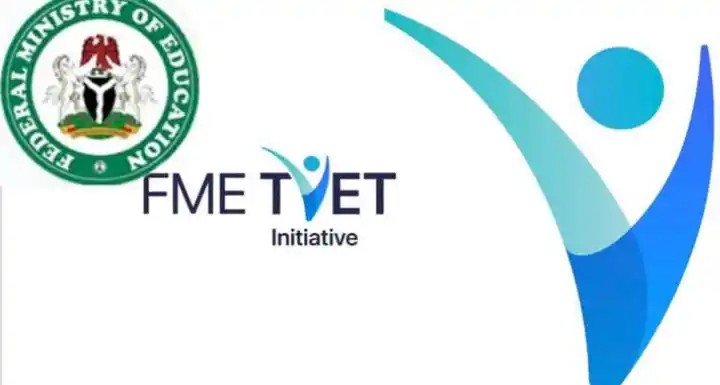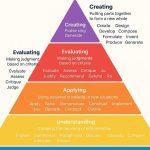How to Use Technology Effectively in Your Classroom: Blended Learning and Classroom Management Tips
Blended learning combines traditional teaching methods with online learning activities, offering a dynamic approach to education. However, this blend also presents unique challenges, particularly in managing devices and resources in the classroom. To help you navigate these challenges, we’ve compiled nine essential classroom management strategies specifically designed for blended learning environments. These strategies will enable you to make the most of the technology your students use, ensuring an organized and efficient learning experience.
What is Blended Learning?
Blended Learning and classroom management Defined
Blended learning is an educational approach that integrates face-to-face classroom instruction with online learning tools and resources. This model allows students to benefit from direct interaction with their teacher while also leveraging the flexibility and accessibility of digital technology. Unlike distance learning, where students learn remotely, blended learning occurs in a physical classroom where digital tools are used to complement traditional teaching.
The Benefits of Blended Learning and classroom management
One of the key advantages of blended learning is its ability to offer a personalized and engaging learning experience. Students can interact with their teacher in real time for guidance and support while also accessing digital content at their own pace. The success of blended learning lies not just in using technology but in how well it is integrated into the curriculum to enhance learning objectives.

9 Blended Learning and classroom management Tips
Effective classroom management in a blended learning environment requires careful planning and a clear understanding of how to balance traditional and digital teaching methods. Here are nine tips to help you manage your classroom more effectively:
1. Device Checklists
Create a checklist for students to follow when using devices. This ensures they have all the necessary apps and resources for each lesson. You can display this checklist in a visible area in your classroom as a reminder for tasks like charging devices at the end of the day.
2. Clear Digital Guidelines
Establish clear norms for digital device usage in your classroom. For example, you can introduce a protocol like “apple up,” where students flip their tablets over when it’s time to focus on the teacher or another task. This helps maintain attention and reduces distractions.
3. Regular Device Audits
Schedule regular checks of your classroom devices, such as every other month, to ensure they are functioning properly. This includes updating software and apps. Involving students in this process can also be a great way to teach them basic computer science skills.
4. Tech Support System
Set up a system for students to report technical issues and provide basic troubleshooting training. This approach can empower students to solve common problems independently, reducing downtime during lessons.
5. Organized Digital Resources
Keep all digital resources well-organized in a central online location, such as a classroom website or learning management system. Tools like Bublup or Google Sites can help you create a visual dashboard for easy access.
6. Collaboration Tools
Use online collaboration tools to facilitate group work, even when students are in the same room. Platforms like Kami and Google Slides are excellent for fostering collaborative learning in a blended environment.
7. Focus on Digital Literacy
Incorporate digital literacy skills into your curriculum to teach students how to use technology responsibly and effectively. This can be integrated into your content area instruction, ensuring students are well-equipped to navigate the digital world.
8. Student Feedback Channels
Utilize digital platforms to gather student feedback, allowing them to ask questions and share their thoughts on the blended learning process. A simple Google Form can be an effective way to facilitate this.
9. Personalized Learning Paths
Leverage digital tools to create personalized learning paths for your students. This allows you to cater to individual needs and learning paces, helping each student achieve success on their terms.
Applying Blended Learning: Practical Classroom Management Strategies
Managing a blended learning classroom is about more than just balancing technology and traditional methods. It involves creating an organized, inclusive, and productive environment that meets the diverse needs of all students. Here are some practical strategies to apply in your classroom:
Stability and Urgency in Blended Learning
When designing a blended learning program, consider the stability and urgency of the content. Some topics, like leadership perspectives or customer service concepts, have long-term relevance, while others, like product information, may change frequently. Understanding this distinction can help you decide how to blend traditional and digital resources effectively.
Cost Considerations in Blended Learning
The cost of developing a blended learning program is another critical factor. High-priority initiatives may justify greater investment in resources like human interactions, including classroom instructors, mentoring, and live presentations. In contrast, less critical content may rely more on technology-based solutions.
Example Scenarios: Blended Learning in Action
Managing Urgent and Unstable Content
Imagine you’re working in a healthcare organization during a time when new information about hormone replacement therapy (HRT) is emerging daily. Doctors need immediate access to the latest data to respond to patient concerns. In this scenario, a blended learning approach might include:
- An Online Knowledge Database: A central repository for the latest HRT information, including FAQs and expert contacts.
- Coaching and Mentoring: Personalized support for doctors through phone consultations with experts.
- Live Online Briefings: Regular updates on the latest findings, with opportunities for doctors to participate in discussions.
Addressing Cultural Shifts with Blended Learning
Suppose you’re introducing global virtual teaming in an organization known for its individualistic culture. Employees may be skeptical about this shift, requiring a blended learning approach that includes:
- Face-to-Face Workshops: Interactive sessions to discuss the benefits and challenges of virtual teaming.
- Live E-Learning Events: Demonstrations of virtual teaming in action, allowing employees to experience the process firsthand.
- E-Learning Modules: Instructional content for team leaders on setting and communicating goals in a virtual environment.
FAQs on Blended Learning and Classroom Management
What is blended learning?
Blended learning is a teaching approach that combines traditional face-to-face instruction with online learning tools and resources, allowing students to benefit from both direct teacher interaction and digital technology.
How can I manage devices in a blended learning classroom?
Use device checklists, establish clear digital guidelines, and conduct regular device audits to ensure that technology is used effectively and efficiently in your classroom.
What are the benefits of blended learning?
Blended learning offers a more personalized and engaging learning experience, allowing students to learn at their own pace while still receiving guidance and support from their teacher.
How can I organize digital resources for blended learning?
Keep all digital resources in a central online location, such as a classroom website or learning management system, to ensure easy access for both you and your students.
What tools can help with collaboration in a blended learning environment?
Online tools like Kami and Google Slides can facilitate group work and discussions, even when students are in the same room but posting in online spaces.
How do I incorporate digital literacy into my blended learning curriculum?
Integrate digital literacy skills into your content area instruction to teach students how to use technology responsibly and effectively.
What is the role of feedback in blended learning?
Digital platforms can be used to gather student feedback, allowing them to ask questions and share their thoughts on the learning process, which can help you adjust your teaching strategies accordingly.
How do I create personalized learning paths in a blended learning environment?
Use digital tools to develop individualized learning plans that cater to each student’s needs and pace, ensuring that all students can achieve success.
What are the cost considerations for developing a blended learning program?
The cost of a blended learning program depends on the resources required. High-priority initiatives may require greater investment in human interactions and live events, while less critical content may rely more on technology-based solutions.
Conclusion
Blended learning offers a powerful way to enhance classroom instruction by integrating traditional teaching methods with digital tools. However, managing a blended learning environment requires careful planning and a thoughtful approach to classroom management. By implementing these strategies, you can create an organized, inclusive, and productive learning environment that meets the needs of all your students.








